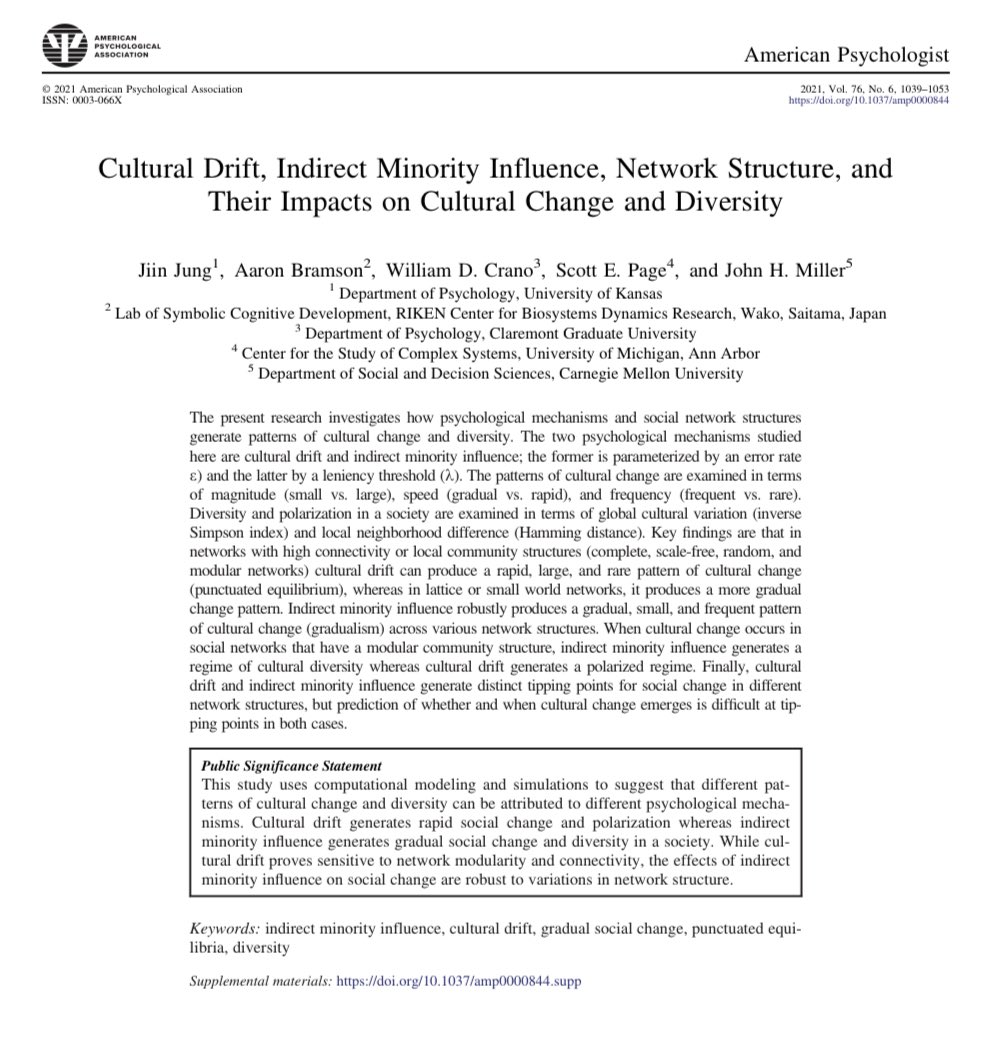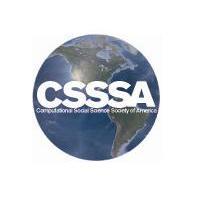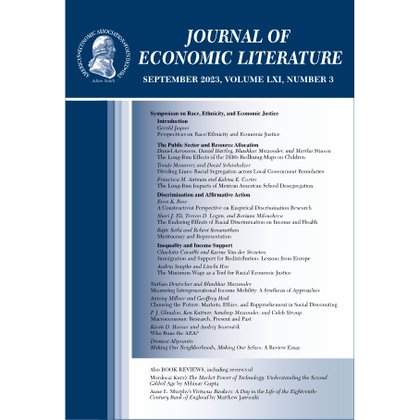
Jiin Jung, PhD
@JiinJung3
Followers
791
Following
3K
Media
105
Statuses
1K
social psychologist studying minority influence on social change | assistant professor of social psychology @Lehigh_Psych @LehighU | secretary @CSSSA_org
Bethlehem, PA
Joined September 2018
Our study uses agent-based modeling and simulation experiments to investigate how social psychological mechanisms and social network structures generate different patterns of collective behaviors such as cultural change, diversity, and polarization.
8
75
306
RT @SPSPnews: The landmark Handbook of Social Psychology's sixth edition is now available - and open access for the first time! It features….
0
12
0
Our paper has been published online first in American Psychologist: .Jung, J., Miller, J. H., & Page, S. E. (2025). Agent-based modeling for psychological research on social phenomena. American Psychologist. Advance online publication.
New Pub! Our paper, “Agent-Based Modeling for Psychological Research on Social Phenomena,” has been accepted for publication in American Psychologist: You can read the preprint here:.
2
7
35
Excited to bring these two researchers to our @CSSSA_org webinar! 👇.
We are very excited to host Andrew Crooks and Alison Heppenstall discussing “Agent-Based Modeling in the Geography” in our 2025 webinar series on Wednesday, May 21st at 11 am (ET). Click here to register:
0
0
1
This will be great! Axtell and Farmer published a giant ABM paper this month, and we will discuss it in the April Webinar. Here is their paper: and you can register 👇.
aeaweb.org
(March 2025) - Agent-based modeling (ABM) is a novel computational methodology for representing the behavior of individuals in order to study social phenomena. Its use is rapidly growing in many...
We are very excited to host Robert Axtell and Doyne Farmer discussing “Agent-Based Modeling in the Economics and Finance” in our 2025 webinar series on Wednesday, April 2nd, at 10 am (ET) . Click here to register:
0
0
4













